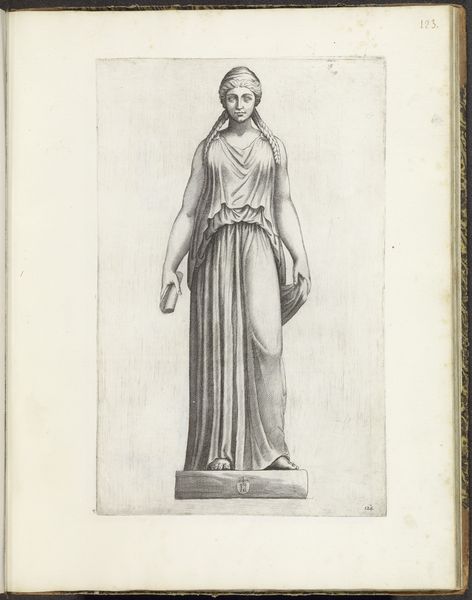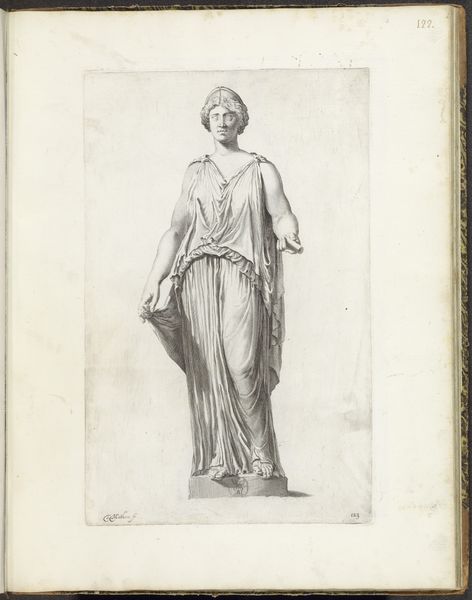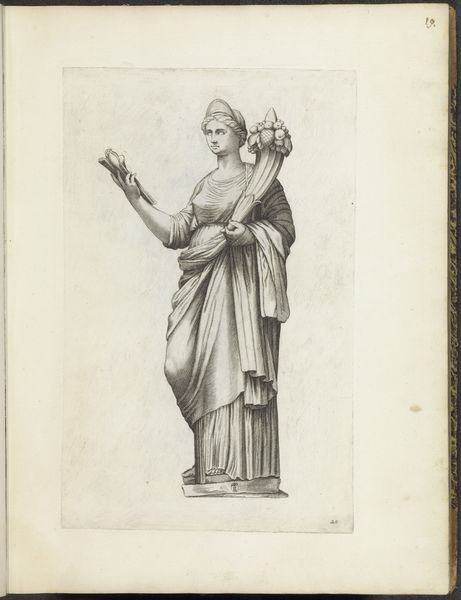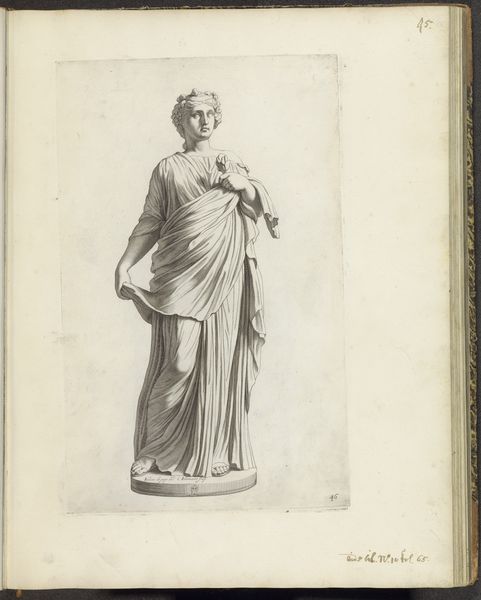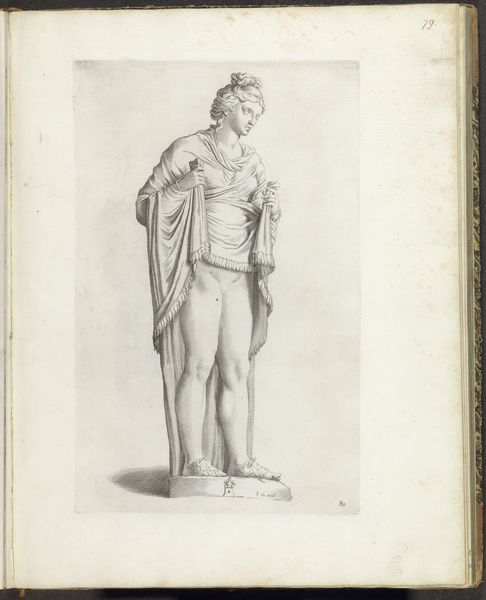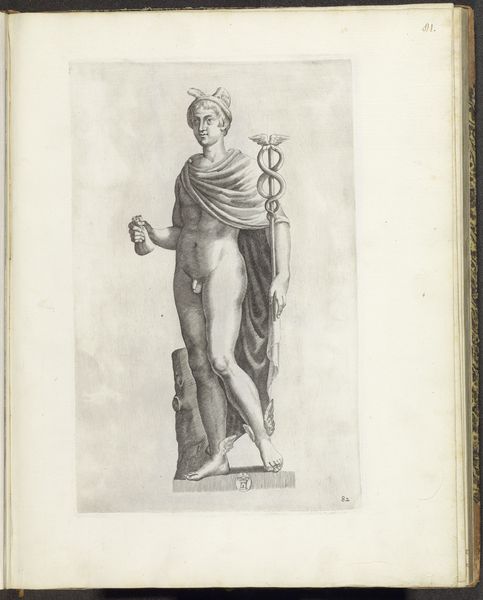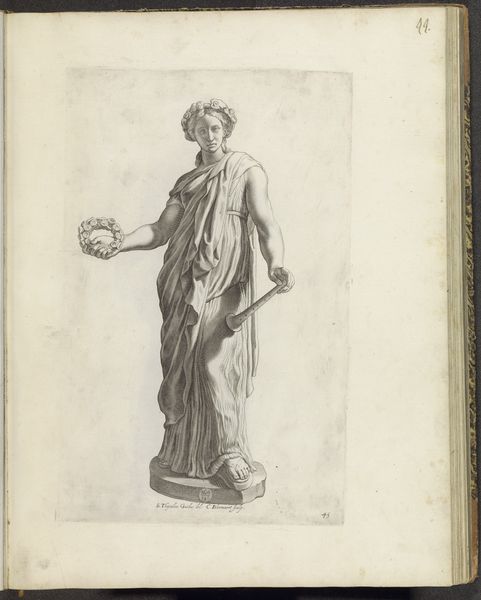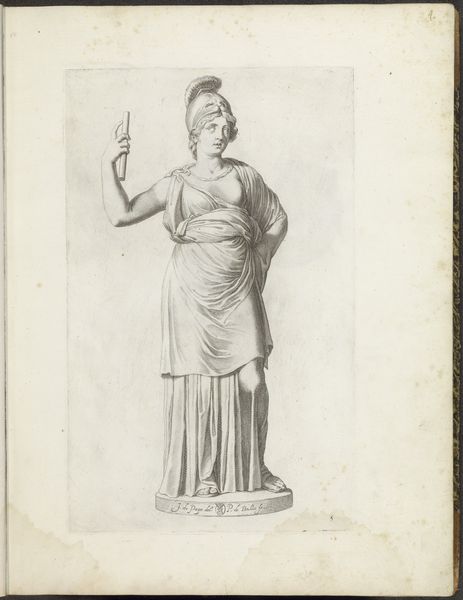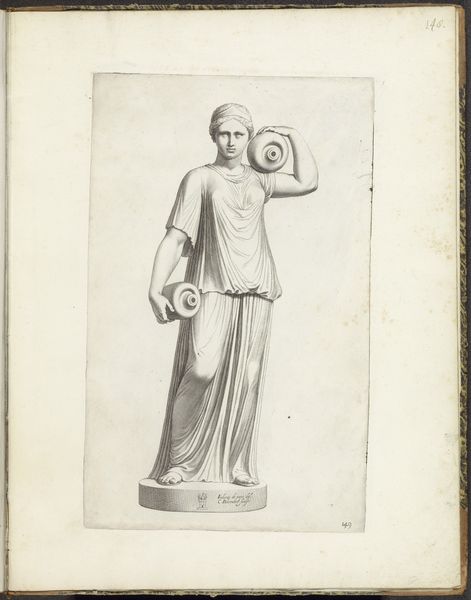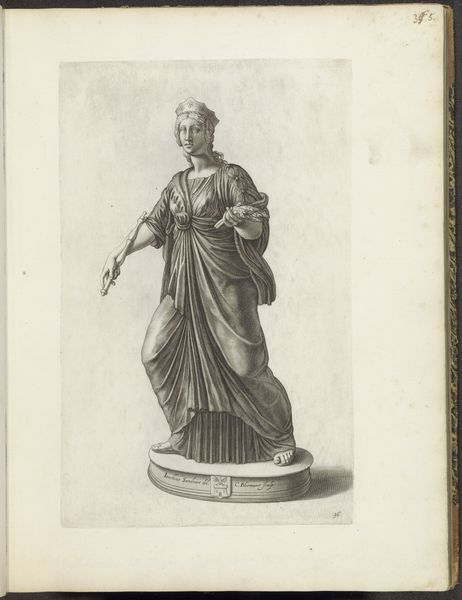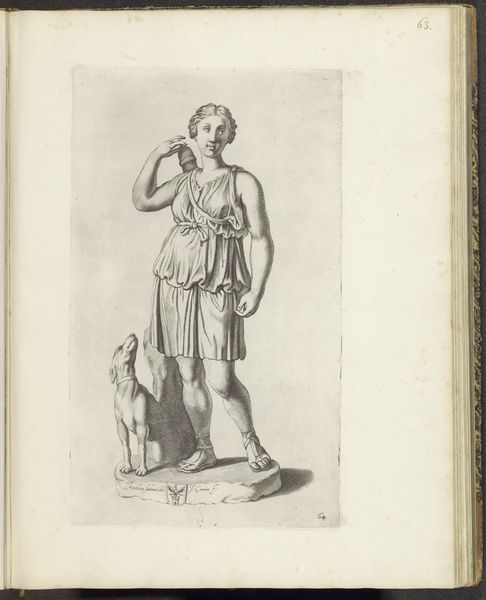
drawing, pencil
#
portrait
#
drawing
#
pencil sketch
#
classical-realism
#
11_renaissance
#
pencil
Dimensions: height 370 mm, width 229 mm
Copyright: Rijks Museum: Open Domain
Editor: Here we have Cornelis Bloemaert's pencil drawing, "Statue of a Woman Combing Her Hair," created sometime between 1636 and 1647. It seems quite academic. What are your thoughts on this artwork? Curator: I see here a deliberate rendering, its strength residing in the meticulous application of line and shadow. Note the almost sculptural quality Bloemaert achieves through controlled hatching. Do you perceive a clear sense of geometric form underlying the figure’s pose and drapery? Editor: Yes, the draping is particularly well done, creating almost architectural shapes. How does that structure contribute to the overall effect? Curator: Precisely. This calculated construction of form directs the viewer’s eye, establishing a visual hierarchy. The planes of the body are simplified, distilled to their essential shapes. Observe how this process removes almost all signs of emotion. Does this calculated precision give you insight into Bloemaert’s artistic approach? Editor: It suggests he prioritized idealized form over emotional expression, adhering to classical principles, perhaps? Curator: Exactly. Bloemaert prioritizes line and volume to illustrate form and texture. The technique creates depth and captures the subject's still form within a quiet space. Editor: I’m struck by the level of detail in the hair versus the relatively smooth skin. I hadn’t really considered the formal impact of that contrast before. Curator: Indeed, these deliberate compositional decisions direct the viewer to an aestheticized subject position and encourage consideration of the technical.
Comments
No comments
Be the first to comment and join the conversation on the ultimate creative platform.

